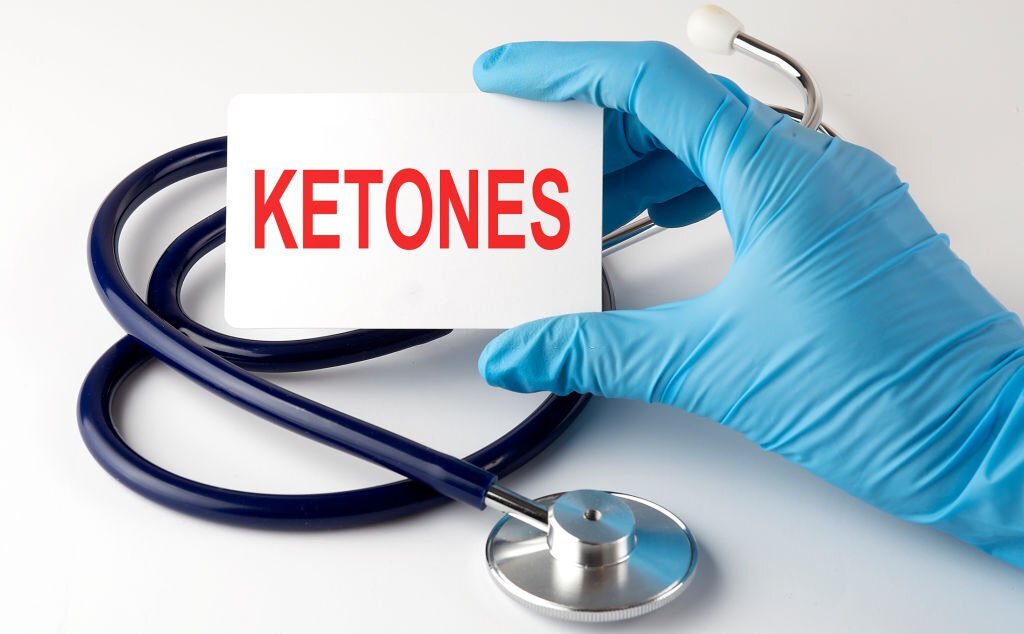
Ketosis is not a diet or a quick fix. It’s a metabolic state in which your body produces ketones, which are byproducts of fat breakdown.
When you reduce the amount of carbohydrates in your diet and increase the fats, your body begins to burn fats instead of glucose for energy. This process is known as ketogenesis, and it results in ketone production.
The presence of ketones in the bloodstream is referred to as being “in ketosis” or having reached a state of keto adaptation.
In this article, we explore what that means, how you can achieve it, and what benefits come from doing so.
What is Ketosis?
Ketosis is a metabolic state in which your body produces small organic molecules called “ketones” from fat.
This happens when you don’t have enough insulin in your body for your cells to use glucose for fuel. When your body can’t use glucose for energy, it turns to using fat instead. Ketones are used by the body as a source of energy instead of glucose.
While glucose is the main source of energy for our bodies, ketones are a secondary source of energy.
The presence of ketones in the bloodstream is referred to as being “in ketosis.”
How to Achieve Ketosis
The general rule of thumb is that you should aim to reduce your carbohydrate intake to less than 50 grams per day to get into ketosis.
This will probably make you feel pretty darn miserable at first, but it will get better over time.
One thing you’ll want to do is keep track of the foods you eat.
Download an app like MyFitnessPal to log your meals and make sure you’re eating enough fat.
You should also increase your intake of high-fat, low-carb foods like avocados, grass-fed butter, and fatty cuts of meat.
While you can’t do anything to speed up the process, you can make the experience easier by eating foods that help reduce the keto flu symptoms.
These include drinking plenty of water, taking a high-quality multivitamin, and getting plenty of sleep.
Ketosis vs Ketoacidosis
People often confuse ketosis with ketoacidosis, which is a medical condition associated with high levels of ketones in the bloodstream.
In contrast to ketosis, ketoacidosis is a condition in which the body has too much insulin and not enough glucose for fuel.
Diabetic ketoacidosis is an emergency that requires prompt treatment, which usually involves giving the patient a glucose solution through an intravenous line. If untreated, diabetic ketoacidosis can be fatal.
The major difference between the two conditions is that in ketosis, the body produces ketones naturally, whereas in cases of diabetic ketoacidosis, the body has lost the ability to make insulin.
The best way to detect ketosis is by monitoring your ketone levels with a ketone test strip or blood test.
If you feel like you’re in a state of ketosis, increase your fat intake gradually until you’re fully adapted.
Benefits of Ketosis
As with any major lifestyle change, ketosis comes with a list of possible benefits and drawbacks. Some of the potential health benefits include:
- Increased fat loss – By burning fat for fuel, ketosis can help you lose excess weight and body fat. This is especially true if you’re overweight or obese.
- Improved mental clarity – Many people who follow ketogenic diets report feeling more clear-headed and focused. This could be due to the fact that ketones are a more efficient source of energy than glucose.
- Reduced risk of Type 2 diabetes – Eating a ketogenic diet may help prevent or reverse Type 2 diabetes. This is because reducing your carbohydrate intake can help you lose excess weight and lower your blood sugar levels.
- Improved heart health – People who regularly consume high-fat diets may have lower rates of heart disease compared to people who eat high-carb diets. This is because fat doesn’t raise blood sugar levels or cause insulin spikes like carbohydrates do.
Side Effects of Ketosis
As with any major lifestyle change, a ketogenic diet also comes with a few potential side effects. Some of the most common short-term side effects include:
- Lethargy – When your body first enters ketosis, it has to start using fat as an energy source. This can cause feelings of fatigue and sluggishness as your body gets used to burning fat instead of glucose.
- Bad breath – One of the most common side effects is bad breath. When your body starts to break down fat, it also produces a substance called “ketones.” These organic molecules have a distinct smell that can be difficult to conceal.
- Weakness – Another common side effect is muscle weakness. This is completely normal during the adjustment period as your body learns to use fat as fuel instead of glucose.
- Constipation – When you first start a ketogenic diet, your body can react by slowing down digestion. This can cause constipation, bloating, and abdominal pain.
Should You Try to Achieve Ketosis?
There are several reasons why people choose to follow a ketogenic diet. Many people choose the diet because they want to lose weight or improve their overall health. However, not everyone should follow a ketogenic diet.
Before you decide to start the diet, it’s important to take stock of your current health and consider any potential risks. If you have any of the following conditions, you should consider consulting a doctor before starting the diet:
– Diabetes – If you have diabetes, you should avoid the ketogenic diet. This is because the diet can lower your blood sugar levels to dangerously low levels.
– Heart disease – If you have existing heart problems, the ketogenic diet can reduce your risk of heart disease. However, the diet might reduce your blood flow to the heart if you don’t follow it properly.
Conclusion
For most people, achieving ketosis is simple. Once you’ve adjusted to the diet and gotten in the swing of things, you’ll find that it’s not as difficult as you thought it would be.
However, for some people, it can take months or even years to get into ketosis.
When you’re first starting out, you’ll likely find that the ketogenic diet isn’t as easy to follow as it was when you first began. That’s ok! As you get used to the diet, you’ll find that it’s easier to stick with.
That being said, it may be worth noting that many people who begin the ketogenic diet experience a significant reduction in their daily caloric intake. This can have an adverse effect on your metabolism, making it difficult to maintain ketosis.
To avoid this, try to maintain your calories while on the ketogenic diet. You’ll also want to make sure that you’re eating enough protein and healthy, non-starchy vegetables on the diet.
And, finally, don’t forget to follow the diet’s rules. While you’re on the diet, you should aim to limit your carb intake to less than 50 grams each day. This can help you maintain ketosis.

I have been a nutritionist for the past ten years, and have faced many people who are almost desperate to get the ideal body shape. Don't let others judge you based on your appearance. Every effort you make will take you to a better stage of life. Research, do, analyze, and repeat the success that occurs.
